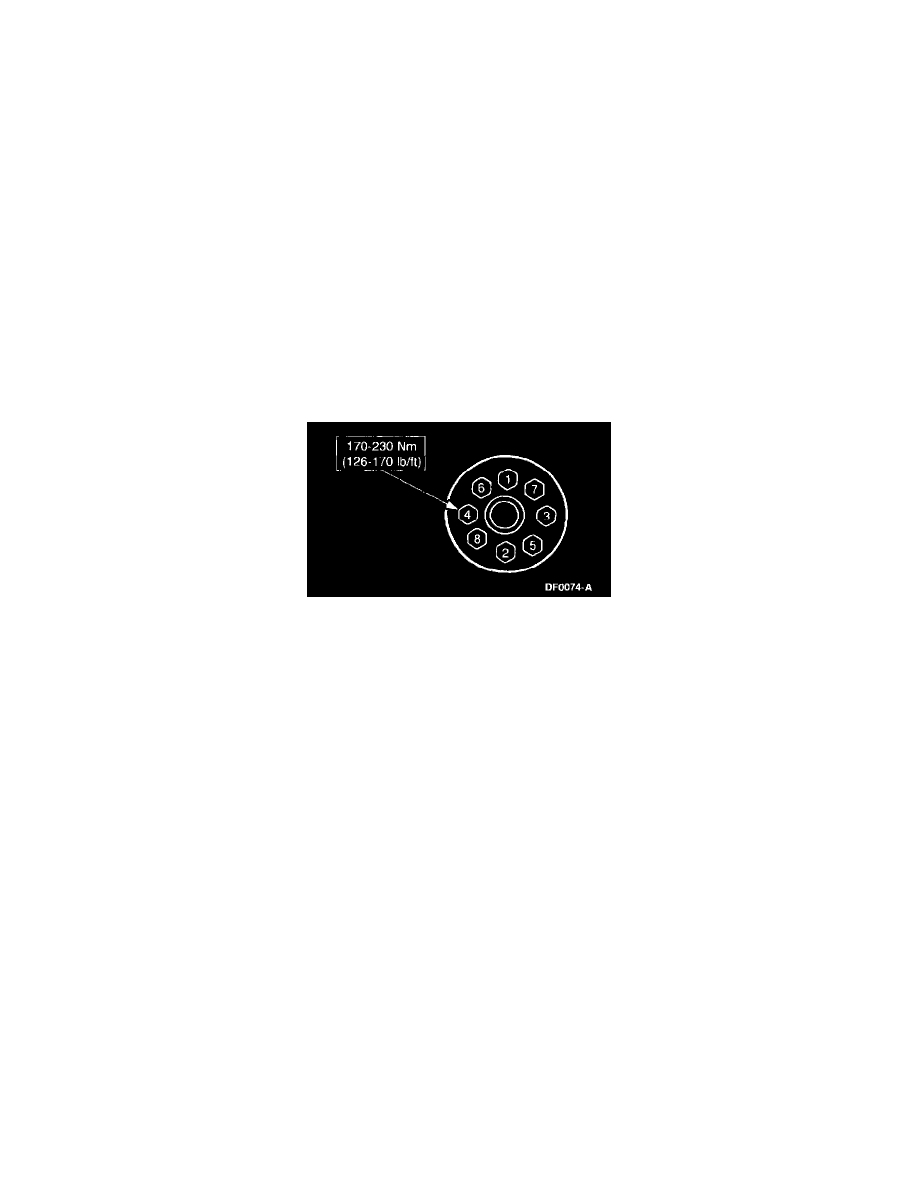Econoline E350 1 Ton V8-5.4L SOHC VIN L (1999)

2. CAUTION: Do not use heat to loosen a seized lug nut. Heat can damage the wheel and wheel bearings.
NOTE: Do not remove the lug nuts at this time.
With the weight of the vehicle still on the tires, loosen the lug nuts.
3. Raise the vehicle until the wheel and tire assembly clears the floor.
4. Remove the lug nuts. Remove the Inner and outer wheel and tire assemblies from the rear hub.
Installation
1. WARNING: When a wheel is installed, always remove any corrosion, dirt or foreign material present on the mounting surfaces of the
wheels or the surfaces of the rear hub that contact the wheel. Installing wheels without proper metal-to-metal contact at the wheel
mounting surfaces can cause the lug nut to loosen and the wheel to come off while the vehicle is in motion, resulting in loss of control.
Mount the inner wheel on the rear hub with the wheel dish facing inboard.
2. Align the wheel with the small indexing hole, located in the wheel between the wheel hub bolt holes, with the alignment pin in the hole in the rear
hub.
3. Make sure the wheel is flush with the rear wheel hub mounting surface so there is no gap between the rear hub and the wheel.
4. Install the outer rear wheel flush against the inner wheel with the hub alignment locating pin protruding through the wheel index hole.
5. Install the lug nuts and tighten until snug.
6. With the lug nuts loosely installed, turn the wheel until one lug nut is at the top of the wheel hub bolt circle. Tighten the swiveling lug nut until
snug. In a crisscross-type pattern, tighten the remaining lug nuts until snug to minimize runout.
7. Lower the vehicle.
8. Tighten the lug nuts to specification.
9. Install the wheel cover, if so equipped.
Single Wheel
Removal
1. Remove the wheel cover, if so equipped.
2. CAUTION: Do not use heat to loosen a seized lug nut. Heat can damage the wheel and wheel bearings.
NOTE: Do not remove the lug nuts at this time.
With the weight of the vehicle still on the tires, loosen the lug nuts.
3. Raise the vehicle until the wheel and tire assembly clears the floor.
4. Remove the lug nuts.
5. Remove the wheel and tire assembly.
Installation
1. WARNING: When a wheel is installed, always remove any corrosion, dirt or foreign material present on the mounting surfaces of the
wheel or the surface of the front disc brake hub and rotor that contacts the wheel. Installing wheels without proper metal-to-metal
contact at the wheel mounting surfaces can cause the lug nuts to loosen and the wheel to come off while the vehicle is in motion, resulting
in loss of control.
Position the wheel and tire assembly on the vehicle.
2. Install the lug nuts loosely. Make sure the cone ends of the lug nut face inward.
3. Turn the wheel until one lug nut is at the top of the wheel hub bolt circle. Tighten the lug nut until snug. In a crisscross-type pattern, tighten the
remaining lug nuts until snug to minimize runout.
4. Lower the vehicle.
